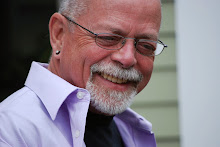Saturday, January 1, 2011
Heroism
But if there is suffering that cannot be forgotten, there is heroism, too.
The mythic narrative that we tell ourselves is that we suffer, and then we rise up and refuse to suffer any longer. This is the great narrative of the American Revolution and of all subsequent revolutions. It is also the narrative of the AIDS years. We were dying, and nobody seemed to care. And then, because nobody cared, the gay community set about caring for itself. It was when Gay Men’s Health Crisis was founded in New York, and when AIDS Action Committee was founded in Boston.
It is also the narrative of the Stonewall Riots. We suffered abuse, and then on the night of June 28, 1969, we refused to go quietly into the paddy wagon, and we rose up and fought back, and we’ve been fighting back ever since.
It’s the narrative of the summer of 1984, in Bangor, Maine, after Charlie Howard was murdered. Gay people who had suffered quietly walked out of the Unitarian-Universalist Church and walked down to the center of town letting everyone know that they were there and were not going away.
Most of the people who walked out of the church in Bangor, straight into the glare of the lights of television cameras, had not come out before, and were now choosing the most public possible way to come out. There were many people who weren’t, and none of us knew what we were walking out into, when we exited the church.
There is drama to that narrative, and the gay community has played it out over and over during the last fifty or sixty years. The story has everything for the novelist—suffering, anguish, anger, refusal, heroism. Every time someone comes out, he or she acts out this narrative again. It’s a universal theme, and it’s another way we show our common humanity.
The mythic narrative that we tell ourselves is that we suffer, and then we rise up and refuse to suffer any longer. This is the great narrative of the American Revolution and of all subsequent revolutions. It is also the narrative of the AIDS years. We were dying, and nobody seemed to care. And then, because nobody cared, the gay community set about caring for itself. It was when Gay Men’s Health Crisis was founded in New York, and when AIDS Action Committee was founded in Boston.
It is also the narrative of the Stonewall Riots. We suffered abuse, and then on the night of June 28, 1969, we refused to go quietly into the paddy wagon, and we rose up and fought back, and we’ve been fighting back ever since.
It’s the narrative of the summer of 1984, in Bangor, Maine, after Charlie Howard was murdered. Gay people who had suffered quietly walked out of the Unitarian-Universalist Church and walked down to the center of town letting everyone know that they were there and were not going away.
Most of the people who walked out of the church in Bangor, straight into the glare of the lights of television cameras, had not come out before, and were now choosing the most public possible way to come out. There were many people who weren’t, and none of us knew what we were walking out into, when we exited the church.
There is drama to that narrative, and the gay community has played it out over and over during the last fifty or sixty years. The story has everything for the novelist—suffering, anguish, anger, refusal, heroism. Every time someone comes out, he or she acts out this narrative again. It’s a universal theme, and it’s another way we show our common humanity.

0 comments:
Post a Comment